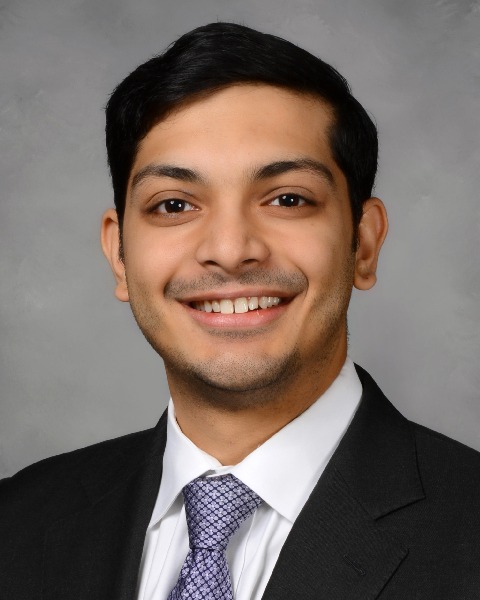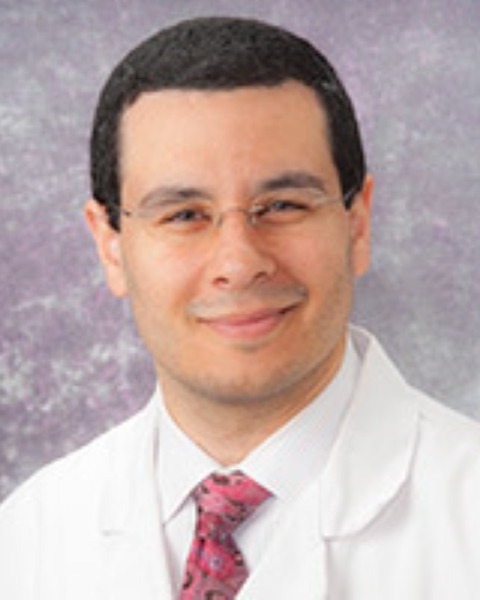Upper Gastrointestinal (lips to ileocecal valve, including esophagus and stomach)
E453: Disparities in Multiagent Perioperative Chemotherapy for Gastric Cancer

Nikhil L. Chervu, MD MS
Resident Physician
David Geffen School of Medicine, UCLA
Los Angeles, California, United States
Nikhil L. Chervu, MD MS
Resident Physician
David Geffen School of Medicine, UCLA
Los Angeles, California, United States- SS
Sara Sakowitz, MS MPH
Medical Student
David Geffen School of Medicine, UCLA, United States - NL
Nguyen Le, BS
Medical Student
David Geffen School of Medicine, UCLA, United States - KA
Konmal Ali, n/a
Undergraduate Student
David Geffen School of Medicine, UCLA, United States - SM
Saad Mallick, MD
Graduate Research Assistant
David Geffen School of Medicine, UCLA, United States - PB
Peyman Benharash, MD
Associate Professor of Surgery
David Geffen School of Medicine, UCLA, United States 
Mark Girgis, MD
Assistant Professor of Surgery
David Geffen School of Medicine, UCLA
Los Angeles, California, United States
ePoster Abstract Author(s)
Submitter(s)
Author(s)
In 2006, the MAGIC trial found that multiagent perioperative chemotherapy (MPC) was associated with survival benefit in patients with gastric cancer. Despite this and the development of novel multiagent regimens such as FLOT, utilization in the US has been limited. We thus conducted a retrospective study to determine disparities in the receipt of combined neoadjuvant/adjuvant chemotherapy for gastric adenocarcinoma.
Methods:
Adult patients who underwent curative intent resection for Stage II-III gastric adenocarcinoma were tabulated from the 2007-2019 National Cancer Database. Patients with esophagogastric junction involvement were excluded. Those receiving multiagent chemotherapy prior to and after surgery comprised the MPC cohort (others: Non-MPC). The significance of temporal trends was calculated using Cuzick’s non-parametric test. Logistic regression was used to determine factors associated with receipt of MPC. Cox proportional hazard modeling was used to determine the impact of MPC on hazard of one-year mortality.
Results:
The proportion of patients categorized as MPC significantly increased from 3.3% in 2007 to 29.9% in 2019 (p< 0.05). Of 12,613 total patients, 18.6% comprised MPC. Compared to Non-MPC, MPC was significantly younger (mean age 60.6 years vs 66.3), more commonly Asian/Pacific Islander (13.8 vs 11.7%), and more frequently underwent preoperative staging (96.3 vs 88.2%, all p< 0.05). Cox proportional modeling revealed that MPC was associated with reduced one-year mortality (Hazard ratio 0.40, 95% Confidence Interval [CI] 0.25-0.64). After adjustment, increasing age (Adjusted Odds Ratio [AOR] 0.96/year, CI 0.96-0.97) and a Charlson Score ≥ 2 (AOR 0.78, CI 0.62-0.97) were associated with decreased odds of MPC. Non-private insurance, such as Medicare (AOR 0.84, CI 0.71-0.99), Medicaid (AOR 0.66, CI 0.54-0.81), and uninsured status (AOR 0.64, CI 0.46-0.89), were linked with lower odds of MPC. Similarly, treatment at community centers (AOR 0.69, CI 0.61-0.79) or integrated networks (AOR 0.67, CI 0.56-0.80) resulted in reduced odds of MPC, compared to academic institutions (Figure).
Conclusions:
Despite improved one-year survival, MPC use has only risen to a third of eligible gastric adenocarcinoma patients in the US. Furthermore, non-tumor factors such as non-private insurance and treatment at non-academic centers were associated with reduced odds of MPC.
Learning Objectives:
- Upon complete, participant will be able to describe the utilization of perioperative chemotherapy for gastric adenocarcinoma in the US
- Upon complete, participant will be able to elucidate factors associated with increased or decreased use of MPC
- Upon complete, participant will be able to understand how disparities may affect gastric cancer treatment in the US
